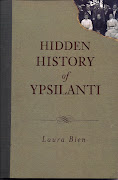 "Rev. T. H. Hector, the well known colored orator, will speak at the Opera House here to-morrow night, from a Prohibition standpoint."
"Rev. T. H. Hector, the well known colored orator, will speak at the Opera House here to-morrow night, from a Prohibition standpoint.""The Cornwell Fire Company celebrated its fifteenth anniversary by a banquet at their hall last Wednesday evening. A very excellent time is reported, notwithstanding the fact that an alarm of fire called the 'Laddies' out in the midst of the festivities. It was 'only a barn,' however, and the boys soon returned, and continued the fun."
[from the 'Neighborhood Notes' section for the little settlement of Superior]: "Peter Furlong and Frank Newton had quite a lively controversy at Cherry Hill hall the other night over the merits of their steam threshers, each of course claiming superior points of his own, and when language failed to make the desired impression, they assumed a pugilistic attitude, and only for the timely interference of friends, they would have smashed each other's shirt collars into a thousand pieces."
[from the 'Neighborhood Notes' section for Whittaker]"As little Jessie Greenman, five years old, was running through a corn field last Monday she passed within a foot of a large rattlesnake but did not see it. Will Breining who was digging potatoes close by heard the warning rattle and went into the corn field and killed it. It makes one shudder to think what the consequence might have been if she had started down the row where the reptile laid coiled up."
[from the 'Neighborhood Notes' section for a place called 'Nora', location unknown to me]: the Literary at Chas. Wheeler's Friday evening was a success, closing with a 'Molly Brooks' party."*
Ad: Barnum's jewelry store stood on Michigan Avenue.
*A 'Molly Brooks" party would today be known as a play-party, a party at which people sang old folk tunes and danced, with no instruments. Starting in the 1830s, the tradition stemmed from a onetime religious prohibition on musical instruments. The page below, from a book about play-parties, shows the music and movements for the song "Molly Brown."









































